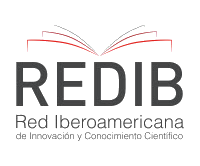Real dynamic languages
##plugins.themes.bootstrap3.article.main##
Some time ago we received an invitation from a public university to give a lecture about our scientific research in human communication, specifically in one of its most important and used components, in the day to day and in their chores, by its producers: human being Talking woman and human being speaking man, as it is the sonorous or spoken component, complemented by its prolonged recording in the timeline, as it is the visual image, written image, written speech or writing. Directed through the Real Dynamic Languages or Real Dynamic Speech: Uiraka Dynamic Language (Colombia) and Umonani Dynamic Language (Brazil) within the theoretical framework of Diversified Linguistics, LINDI or Speech Theory. Being that the subject to be approached during said conference, we centralize it within the title: REAL DYNAMIC LANGUAGES.
Downloads
##plugins.themes.bootstrap3.article.details##
Area, M. (2012). Alfabetización digital en la Sociedad Digital. En M. Area, A. Gutiérrez, y F. Vidal, Alfabetización digital y Competencias Informacionales (pag. 225). Madrid: Ariel S.A.
Centro de Educación y Tecnología del Ministerio de Educación de Chile ENLACES (2008) Estándares TIC para la formación inicial docente: Una propuesta en el contexto chileno, (OREALC/UNESCO Santiago).
Coll, C. (2008). Aprender y ensenar con las TIC: expectativas, realidad y potencialidades en Los Desafíos de las TIC para el cambio Educativo p 120 - 121) Fundación Santillana.
EPICT (2006). European pedagogical ICT licence: Concept description: EContent. http://www.epict.org/about_epict/files/EPICT%20content%20description.pdf.
Gutiérrez, A (2012). Formación del profesorado para la alfabetización multiple en Alfabetización digital y competencias informacionales. Fundación telefónica, Barcelona, España.
Howe, N. y Strauss, W. (2000). Millennials rising: The next greatest generation. New York: Vintage Books.
International Society for Technology in Education. (2007). ISTE Standards Students. Obtenido de: http://www.iste.org/docs/pdfs/20-14_ISTE_Standards-S_PDF.pdf
Meter, Dirr J. (2004), Desarrollo social y educativo con las nuevas tecnologías, en Nuevas tecnologías y Educación, Martínez, F. y Prendes, M. (coord), Madrid: Pearson.
Organización de las Naciones Unidas para la Educación, la Ciencia y la Cultura (UNESCO). (2008) Estándares UNESCO de Competencia en TIC para Docentes (ECD-TIC). Londres.
Pedro, F. (2006) Aprender en el nuevo Milenio: Un desafió a nuestra visión de las tecnologías y la enseñanza. Consultado en: http://idbdocs.iadb.org/wsdocs/getdocument.aspx?docnum=848274.
Prensky, Mark. (2001): "Digital Natives, Digital Immigrants. Part 1", en On the Horizon, vol. 9, n.° 5.
Ramirez Culebro C.M. (2012). Análisis de las competencias básicas en tecnologías de la información y la comunicación (TIC) del profesorado de educación primaria: Un plan de formación. Municipio de Comitan, Chiapas, Mexico. Tesis doctoral. Doctorado en Educación Universidad Autónoma de Barcelona. P 48.
Serres, M. (2012). Pulgarcita. Paris, Francia. Traducción hecha por Luis Alfonso Palauc.
Tapscott, D. (1998). Creciendo en un entorno digital: La generación Net. Mexico : McGraw-Hill.














